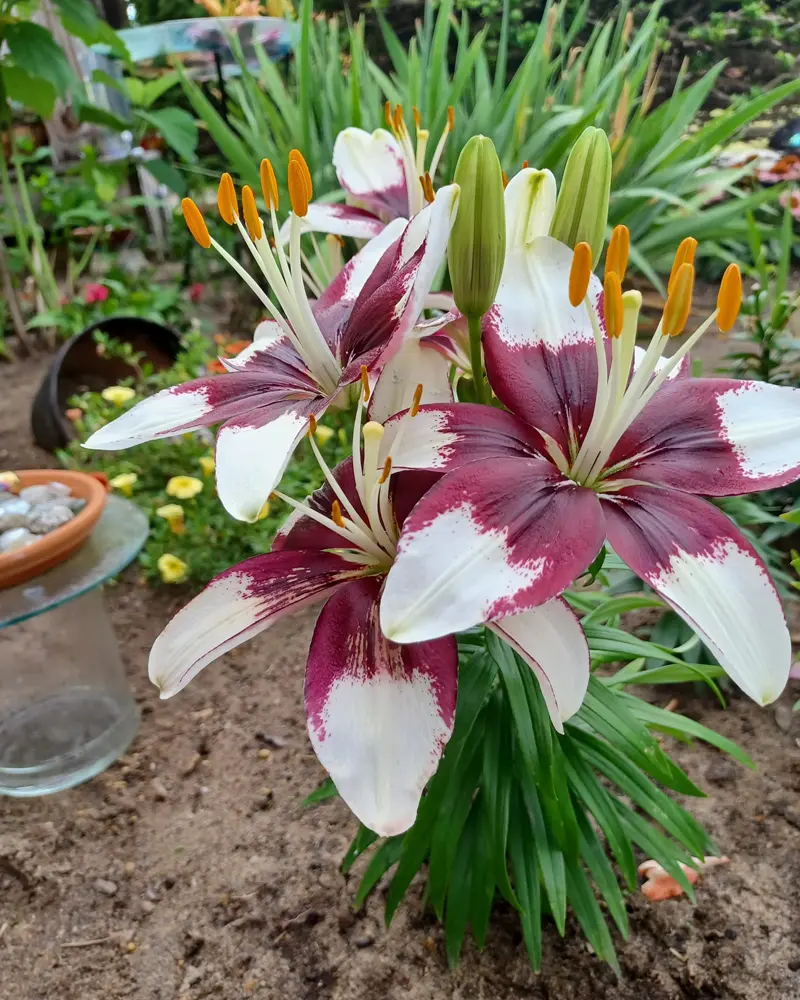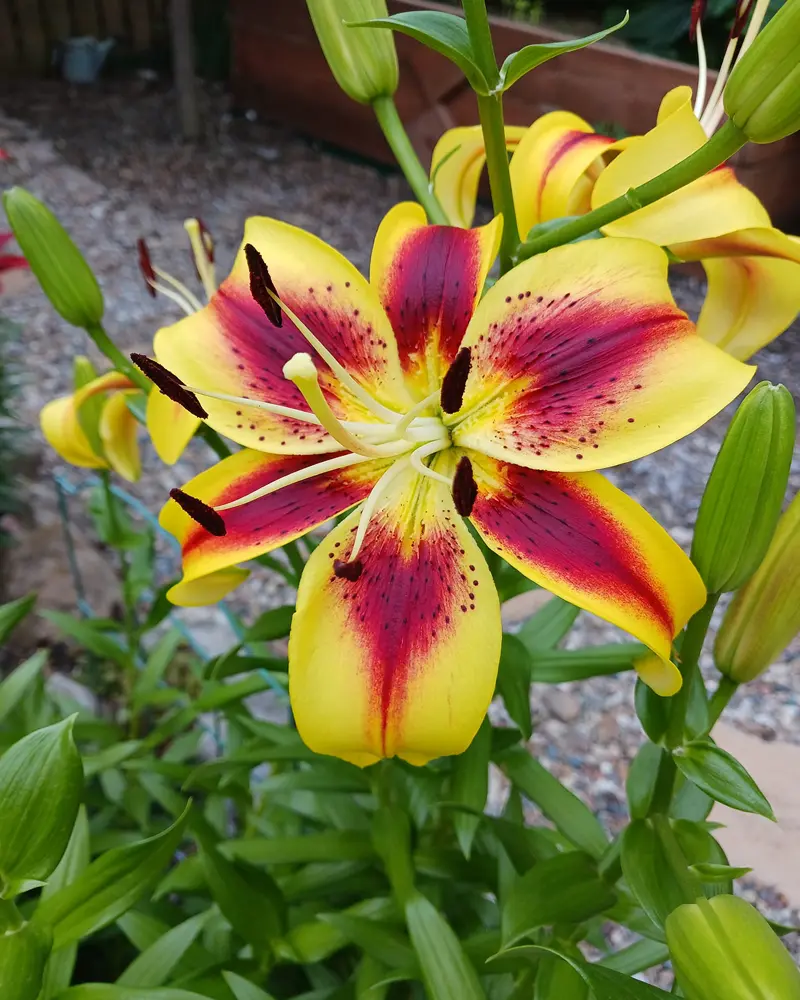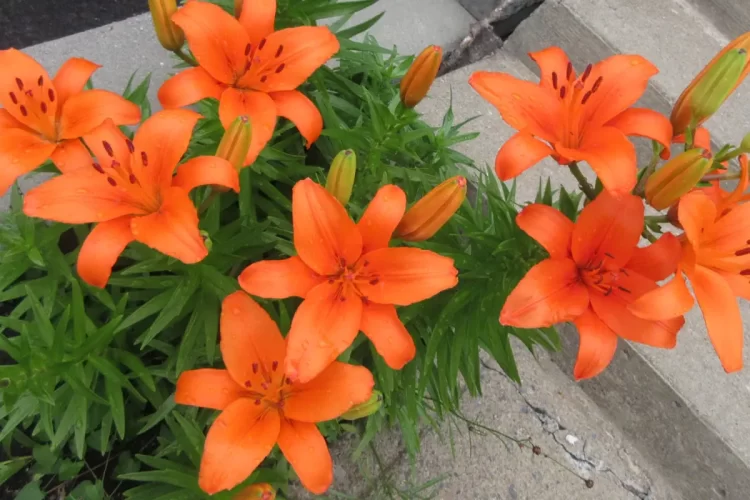Lilies are cherished for their breathtaking blooms and delightful fragrances, adding elegance and color to any garden. Knowing when to plant lily bulbs is crucial to ensure healthy growth and abundant flowering. This comprehensive guide offers detailed insights on the best time to plant lily bulbs, ideal growing conditions, and essential care tips to help these beautiful flowers thrive in your garden.
Understanding Lily Varieties for Optimal Planting Times
Lilies come in various types, each with unique characteristics and growing requirements. Common types include Asiatic, Oriental, Trumpet, and Martagon lilies. Each type has specific growth cycles, influencing the ideal planting times and conditions:
- Asiatic Lilies: Known for their vibrant colors, Asiatic lilies are hardy and bloom earlier in the season. They are ideal for spring and summer gardens.
- Oriental Lilies: These are famous for their fragrance and large blooms, blooming later in the season. Oriental lilies benefit from summer planting for late blooms.
- Trumpet Lilies: With their trumpet-shaped flowers, they produce abundant blooms in midsummer.
- Martagon Lilies: These unique lilies feature downward-facing blooms and thrive in partial shade, making them ideal for woodland gardens.
Best Time to Plant Lily Bulbs
Fall Planting for Spring Blooms
For most lily varieties, fall is the ideal time to plant bulbs. Planting lily bulbs in autumn allows the roots to establish before winter, leading to vigorous growth and abundant flowering in spring. Aim to plant bulbs from late September to early November, depending on your climate zone. The cool temperatures encourage root development, essential for a strong start in spring.
Spring Planting for Summer Blooms
In regions with harsh winters or if you missed fall planting, you can plant lily bulbs in early spring. Ensure the soil is workable and frost-free before planting. Spring-planted lilies may bloom slightly later, providing vibrant colors throughout the summer. Keep in mind that spring-planted bulbs might need extra watering and care due to warmer conditions.
Climate Considerations for Planting Timing
- Cold Climates: In USDA zones 3-6, plant lily bulbs in early fall to allow ample time for root growth before the first frost.
- Mild Climates: In USDA zones 7-9, lily bulbs can be planted from late fall to early winter, as the mild temperatures enable gradual root establishment.
- Warm Climates: In USDA zones 10 and above, where winters are mild, consider planting lily bulbs in late winter or early spring. Alternatively, pre-chill bulbs in the refrigerator for six weeks before planting to simulate winter dormancy.
Preparing the Planting Site

Creating the ideal environment for lily bulbs is essential for healthy growth. Choose a sunny location with well-draining soil to prevent waterlogged roots.
Selecting the Right Location
Lilies thrive in areas with full sun to partial shade. For optimal flowering, ensure they receive at least six hours of sunlight daily. Morning sun is particularly beneficial, as it dries moisture on leaves and helps prevent fungal diseases. If your climate is especially hot, consider planting lilies in a spot with afternoon shade to protect them from excessive heat.
Soil Preparation for Lilies
Lilies require fertile, well-draining soil to prevent root rot and promote growth.Check your soil’s drainage by digging a hole and filling it with water. If the water drains within a few hours, the soil is suitable for lilies. Amend clay-heavy soil with organic matter, such as compost or peat moss, to improve drainage and nutrient content.
- Soil pH: Aim for a soil pH between 6.0 and 7.0, slightly acidic to neutral. Avoid highly alkaline soil, which can hinder nutrient absorption.
- Nutrient Enrichment: Incorporate well-aged compost or a balanced slow-release fertilizer into the soil to supply essential nutrients for the bulbs.
How to Plant Lily Bulbs Correctly
Proper planting depth and spacing are critical to ensure healthy growth and avoid overcrowding. Follow these guidelines for successful bulb planting:
Planting Depth and Spacing
- Depth: Plant lily bulbs at a depth of about 6-8 inches. In warmer climates, planting slightly deeper (around 8-10 inches) helps protect bulbs from excessive heat.
- Spacing: Space bulbs 8-12 inches apart to give each plant room to grow. Crowded bulbs may lead to weaker blooms and increased susceptibility to disease.
Planting Technique
- Dig a Hole: Create a hole at the recommended depth, ensuring the soil is loose to encourage root growth.
- Position the Bulb: Place the bulb in the hole with the pointed end facing upward. Cover it with soil and gently press down to secure it.
- Water Thoroughly: After planting, water the bulbs deeply to settle the soil and initiate root growth.
Adding Mulch
Adding a 2-3 inch layer of mulch around the planted bulbs helps retain moisture, regulate soil temperature, and suppress weed growth. Organic mulch, such as shredded bark or straw, is ideal for lilies. Avoid piling mulch directly over the bulbs, as excessive moisture can lead to rot.
Caring for Lily Plants After Planting

Proper care after planting is essential to ensure robust growth and vibrant blooms. Follow these maintenance tips to help lilies thrive.
Watering Requirements
Lilies prefer consistent moisture but should not be overwatered. Water deeply once a week, ensuring the soil remains slightly moist but not soggy. During dry spells, increase watering frequency, especially as buds begin to form.
- Avoid Overwatering: Waterlogged soil can cause bulb rot, so allow the soil surface to dry between watering.
- Early Morning Watering: Water lilies in the morning to allow excess moisture to evaporate, reducing the risk of fungal diseases.
Fertilizing Lilies
Lilies thrive with regular feeding throughout the growing season. Use a balanced, slow-release fertilizer or an organic bulb food to nourish the plants.
- Timing: Fertilize lilies when shoots emerge in spring, then again before and after flowering.
- Application: Apply fertilizer around the base of the plant, avoiding direct contact with stems, as this can cause fertilizer burn.
Supporting Tall Lily Varieties
Some lily varieties, such as Trumpet and Oriental lilies, can grow quite tall and may need staking to support their blooms. Use garden stakes or bamboo sticks, tying the stems loosely to prevent breakage in strong winds.
Protecting Lily Bulbs from Pests and Diseases
Lilies are susceptible to pests like aphids, lily beetles, and slugs, as well as diseases such as botrytis blight. Taking preventive measures can help keep your lilies healthy and blooming.
Common Pests
- Lily Beetles: Red lily beetles can severely damage foliage. Inspect plants regularly and remove beetles by hand or use an organic insecticide if necessary.
- Aphids: Aphids can spread diseases and weaken plants. Use insecticidal soap or neem oil to control infestations.
- Slugs and Snails: These pests can damage young shoots. Use organic slug bait or place crushed eggshells around the base of plants to deter them.
Disease Prevention
- Botrytis Blight: This fungal disease causes brown spots on leaves and stems. To prevent it, avoid overhead watering and ensure good air circulation around the plants.
- Bulb Rot: Avoid planting in poorly drained soil, as excess moisture can lead to bulb rot. Proper planting depth and spacing are essential to prevent overcrowding and reduce disease risk.
When to Expect Blooms and Deadheading Tips
Lily blooms typically appear in late spring to midsummer, depending on the variety and planting time. After the blooms fade, deadheading can help promote a neater appearance and redirect energy toward the bulb.
- Remove Spent Blooms: Cut off faded flowers just below the bloom, taking care not to damage the main stem.
- Allow Foliage to Die Back Naturally: The leaves and stems continue to photosynthesize, feeding the bulb for next year’s growth. Only trim back the foliage once it turns yellow and dies down naturally.
Preparing Lily Bulbs for Winter
In colder climates, protecting lily bulbs during winter is essential to ensure they survive and rebloom. Follow these steps to winterize your lilies:
- Mulching: Apply a thick layer of mulch, about 4-6 inches, over the planting area to insulate bulbs from extreme cold.
- Container-Grown Lilies: For lilies grown in pots, move containers to a sheltered area or bury the pots in the ground to prevent freezing.
- Removing Mulch: In spring, remove the mulch gradually as temperatures warm, allowing new shoots to emerge.
Lilies are an excellent addition to any garden, offering stunning blooms and fragrances with relatively low maintenance. By choosing the right time to plant and providing proper care, you can enjoy these beautiful flowers year after year.


